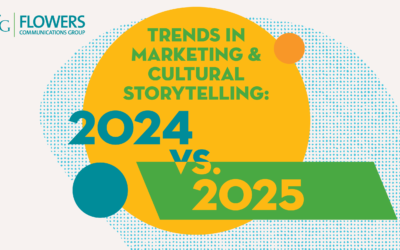In a surprising yet embraced turn of events in 2024, Black artists have surged to the top of the Country genre music charts with Beyoncé’s March 29 release of ‘Cowboy Carter’ propelling that shift.
As we commemorate Black Music Month, this rapid transition in pop culture underscores the imperative need for media, entertainment, and marketers to move beyond common typecasting, and rather, lean into the cultural roots of diverse populations to fully understand that nuanced experiences exist among multicultural communities that have been historically defined as monoliths.
To fully understand why Beyoncé’s genius move into the Country music scene has proven successful, it’s crucial to recognize that several factors contributed to this success, including an element of surprise and heightened acknowledgment and celebration of Black musicians within Country music.
The element of surprise
On February 11, just as everyone was catching their breath from Usher’s jaw-dropping Super Bowl halftime show, “Queen Bey” stunned the internet with an unexpected appearance in a Verizon commercial.
While 120 million viewers watched Beyoncé create a lemonade stand, become a Presidential candidate, and build an AI Robot, the last thing anyone expected was a sudden music drop at the end of the ad.
Just minutes later, Beyoncé dropped two new releases teasing her upcoming album. The songs, “Texas Hold ‘Em” and “16 Carriages,” launched at #1 on the Country music charts that same week.
The element of surprise may be considered Advertising 101 by some, yet it clearly demonstrates that consumers still cherish and engage with unexpected delights. This key marketing tactic attracts consumers like bees to honey (Get it?). Beyoncé is astute to this, as proven by her self-titled album released 10 years ago, which reached #1 with no promotion and visuals behind it ahead of time.
Ripple effects in multicultural music representation
According to Billboard, following Beyoncé’s Super Bowl drop, many Black Country artists have seen their streaming numbers skyrocket due to the quest for more representation of Black artists in the genre. This also demonstrates that if Beyoncé’s goal was to garner more recognition for Black artists in the Country music scene, then her plan succeeded.
For example, Tanner Adell, featured on the album, received an increase of 188% in her catalog in the streams from February 9-12 (230,000 official on-demand streams) to Feb. 16-19 (670,000 streams).
In April, Shaboozey also made history with his catchy track “A Bar Song (Tipsy),” paying homage to J-Kwon’s 2004 hit “Tipsy,” by dethroning Beyoncé from the #1 spot on Billboard’s Hot Country Songs chart. And according to Nielsen data, Country is consistently a top 10 radio format by monthly reach for Black listeners.
The case study of Beyoncé’s move into Country music will live on as a telltale example of the success of her marketing tactics, spurring a “Renaissance” or reclamation of genres that would arguably be nothing without Black, but also Latino artists.
According to The Nation, in the 1920s, early forms of country music emerged from honky tonk, which drew inspiration primarily from ragtime and was also heavily influenced by Mexican ranchera music. During its peak, many Western Country artists also borrowed its distinctive sound from Mexican musical traditions of the 1930s. This included elements such as violin or fiddle melodies, a variety of string instruments, and abundant use of horns, akin to the big-band sound known as banda. These sounds are still very much heard in music by today’s top Mexican artists like Carin Leon, Christian Nodal, Grupo Frontera, Natanael Cano, among others – let alone artists in the United States singing Country music in English, like The Mavericks and Louie TheSinger.
Beyoncé has unquestionably sparked a resurgence. She has opened the views of marketers to connect with untapped and overlooked audiences, along with a bevy of artists who have been passed over due to racial bias in the genre.
This case study emphasizes the importance for communicators to embrace diverse representation while also recognizing and respecting the cultural foundations of each community. By doing so, communicators can authentically engage with diverse audiences, fostering deeper connections and more effective communication strategies that resonate across cultural boundaries. Understanding these cultural roots not only enhances inclusivity but also promotes empathy, mutual understanding, and meaningful engagement in today’s diverse global landscape.
Taylor Hancock is a Summer Intern at Flowers Communications Group




